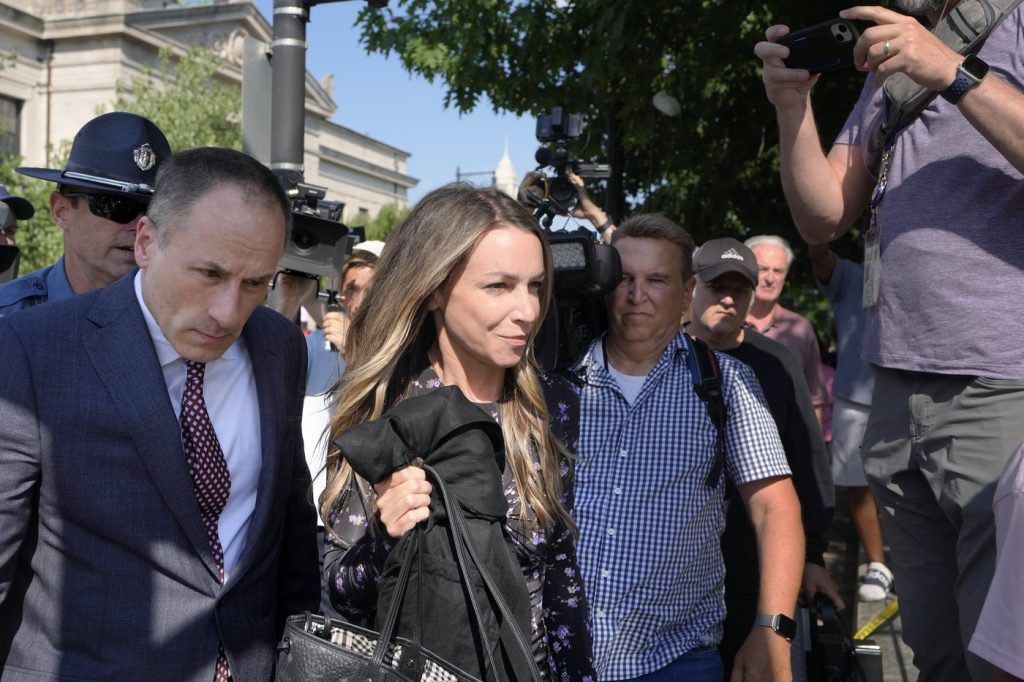Karen Read’s jurors must now decide: Was it deadly romance or police corruption?

Posted Jun 25, 2024 01:08:52 AM.
Last Updated Jun 25, 2024 06:10:49 PM.
DEDHAM, Mass. (AP) — The fate of Karen Read was handed Tuesday to jurors who must decide whether she ended a rocky romance by angrily striking her boyfriend with her SUV and leaving him mortally injured in the snow, or is a victim of police corruption, framed to cover up a fight at the home of his fellow Boston officer.
Jurors got to work after a two-month murder trial in the death of Boston officer John O’Keefe in January 2022. The case has drawn outsized attention, fanned by true crime bloggers and Read’s pink-shirted supporters.
Defense lawyer Alan Jackson described a cancer of lies that turned into a cover-up, and told jurors they’re the “only thing standing between Karen Read and the tyranny of injustice.”
“You have been lied to in this courtroom. Your job is to make sure you don’t ever ever look the other way,” he said Tuesday.
But Assistant District Attorney Adam Lally told jurors “there is no conspiracy.” He began his closing argument with the words four witnesses reported hearing Read say after O’Keefe was discovered on the snowy lawn: “The defendant repeatedly said ‘I hit him. I hit him. Oh my God. I hit him.’”
“Those were the words that came from the defendant’s mouth,” Lally said.
Read, a former adjunct professor at Bentley College, is charged with second-degree murder, which carries a maximum penalty of life in prison, along with manslaughter while operating under the influence of alcohol, and leaving a scene of personal injury and death. The manslaughter charge carries a penalty of five to 20 years in prison, and the other charge has a maximum penalty of 10 years.
Her lawyers contend O’Keefe was dragged outside after he was beaten up in the basement and bitten by a dog at Boston officer Brian Albert’s home in Canton.
“Ladies and gentlemen, there was a cover-up in this case, plain and simple,” Jackson said.
Lally, however, showed the jurors what Read herself said that night, in a voice message she left for O’Keefe moments after her car recorded her driving in reverse at approximately 24 mph (39 kph) and then leaving the scene: He said she was “seething in rage as she’s screaming, ‘John, I (expletive) hate you!’”
The defense said witnesses who claimed to have heard her say she hit O’Keefe had changed their story or couldn’t have heard her comments in the chaos of that moment. Jackson said investigators focused on Read because she was a “convenient outsider” who saved them from having to consider other suspects, including Albert and other law enforcement officers at the house party. He also pointed to connections between Albert and the state trooper who led the investigation.
“Michael Proctor didn’t draw a thin blue line, he erected a tall blue wall,” Jackson said. “A wall that you can’t scale, a wall that Karen Read certainly couldn’t get over. A wall between us and them. A place you folk are not invited. ‘We protect our own.’”
Jackson suggested that Brian Higgins, a federal agent who had exchanged flirty texts with Read, lured O’Keefe to the house party, where the two got into a fight, leading to punches and a fall.
“The panic sets in,” he said. “It wasn’t intended to go that far but what is done is done.”
Prosecutors spent most of the trial methodically presenting evidence from the scene. The defense called only a handful of witnesses but used its time in cross-examining prosecution witnesses to raise questions about the investigation, echoed by a chorus of supporters outside.
—-
This story has been corrected to show defense attorney Alan Jackson used the word ‘coverup’ and not ‘conspiracy’ in addressing jurors.
Michael Casey, The Associated Press








